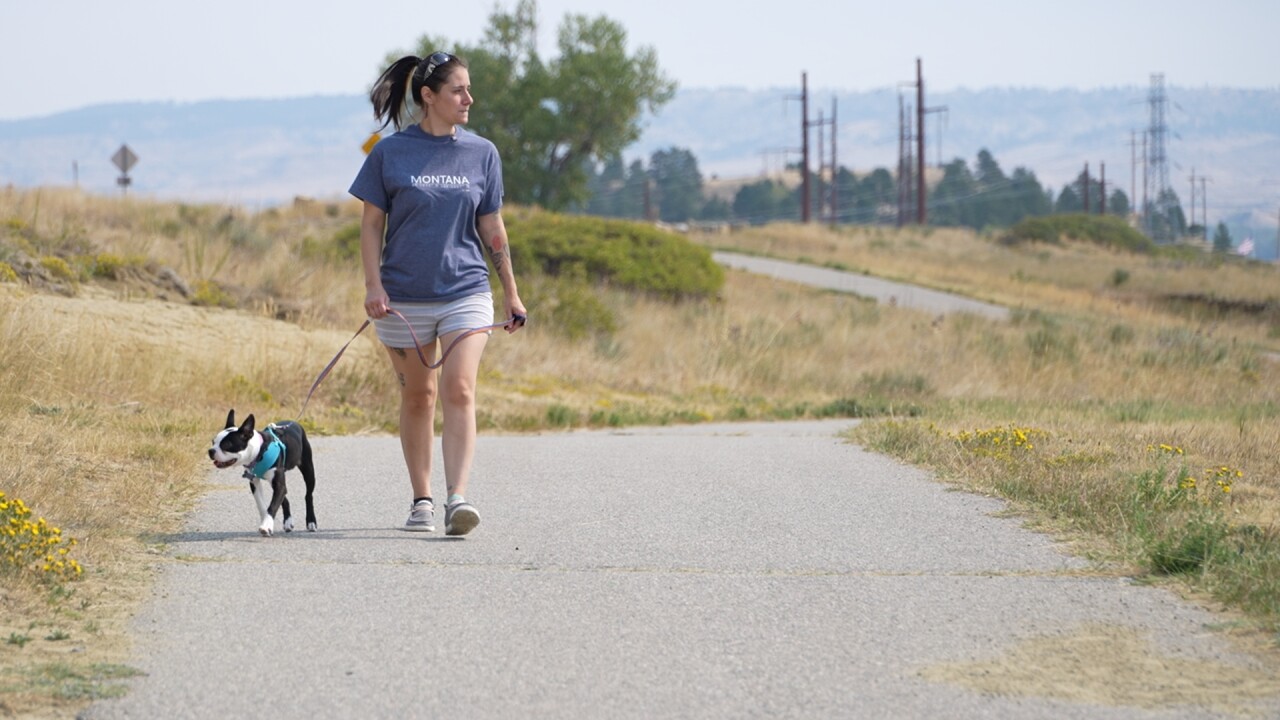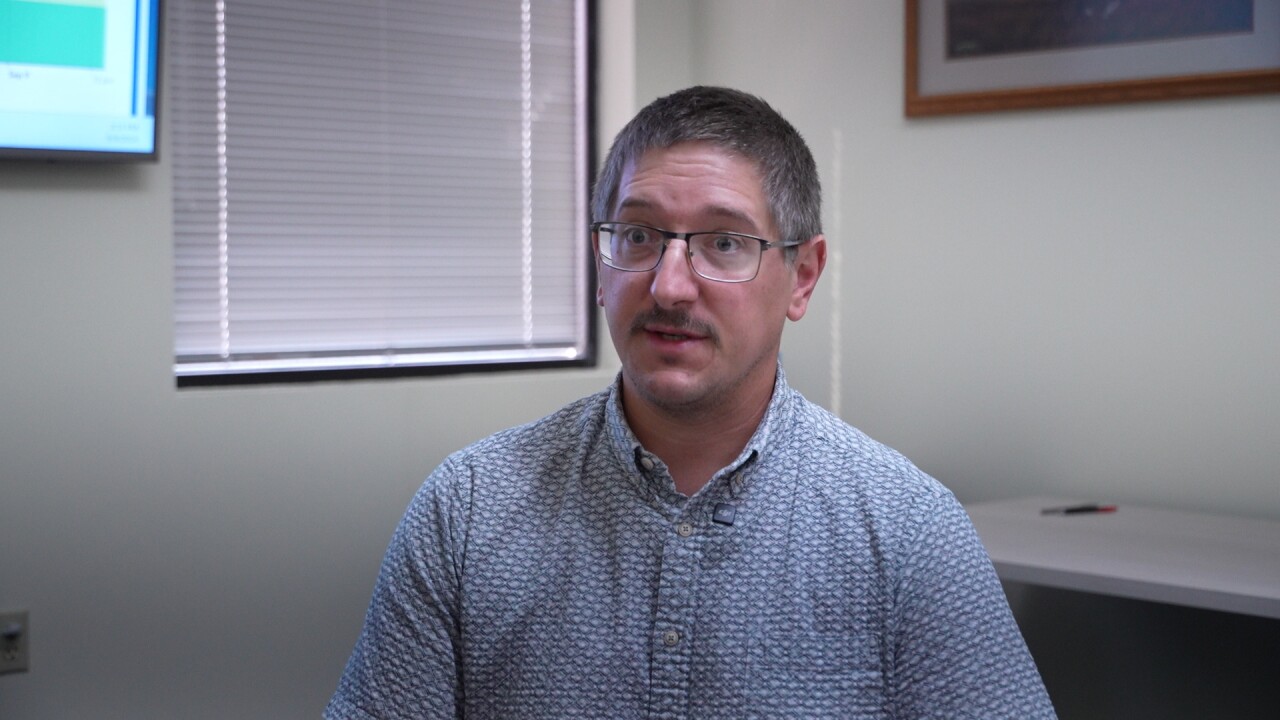BILLINGS — Much of Montana might be covered in smoke and haze due to the wildfires in Idaho, but it’s something the state has seen all summer.
A U.S. Forest Service study shows that wildfire season in Montana has grown longer, contributing to more days with lower air quality.
For Billings resident Holly Caufield, the hazy air meant a change in plans.
“We were going to go paddleboarding, but it was kind of gross and hazy, so we decided, I don’t know, it was just kind of depressing,” said Caufield.
Mother Nature had different plans, which meant Caufield opted to walk her dog Maze on the Rims.

Justin McKinsey/MTN News
Holly Caufield and her dog Maze on the Billings Rims.
“Just kind of depressing. Gross, muggy, kind of makes us tired. Headaches,” Caufield said.
That’s true for people across much of the state with the smoke affecting communities from Missoula to Miles City.
“In the central part of the state, it’s at the unhealthy level right now… right now we’ve just moved into, we’re approaching unhealthy levels in the Billings area,” said Billings National Weather Service meteorologist John Wetenkamp.
Wetenkamp said longer fire seasons mean hazier skies in Big Sky Country.
“There’s been an uptick in fire activity, so yeah, most likely we’re experiencing more days of poor air quality than we have, historically, just do the uptick in wildfires,” Wetenkamp said.

Alina Hauter/MTN News
Billings National Weather Service meteorologist John Wetenkamp
According to a study recently conducted by the U.S. Forest Service, fire seasons have grown significantly longer with the length of fire weather season increasing 18.7% from 1979 to 2013.
Some forests in Montana have seen fire season lengthen by 36 days on average each year. In Eastern Montana — including the site of this year’s massive Remington Fire — fire season is 42 days longer compared to 30 years ago.
“A lot of that has to do with changes in precipitation patterns, warmer temperatures, and also just us as a society becoming more vulnerable to wildfire and wildfire impacts as the population increases in some of the more fire-prone areas,” said Wetenkamp.
More fire means more smoke, and in the case of Caufield, more headaches, even though her dogs might not mind.
“They like it, they enjoy it, I don’t think it really bothers them,” Caufield said.
Source link : http://www.bing.com/news/apiclick.aspx?ref=FexRss&aid=&tid=66e2dc6fe61a4dd68ab5db5918cb6b83&url=https%3A%2F%2Fwww.kpax.com%2Fnews%2Fmontana-news%2Flonger-wildfire-season-in-montana-means-more-days-with-low-air-quality&c=967968360423387147&mkt=en-us
Author :
Publish date : 2024-09-10 09:10:00
Copyright for syndicated content belongs to the linked Source.





